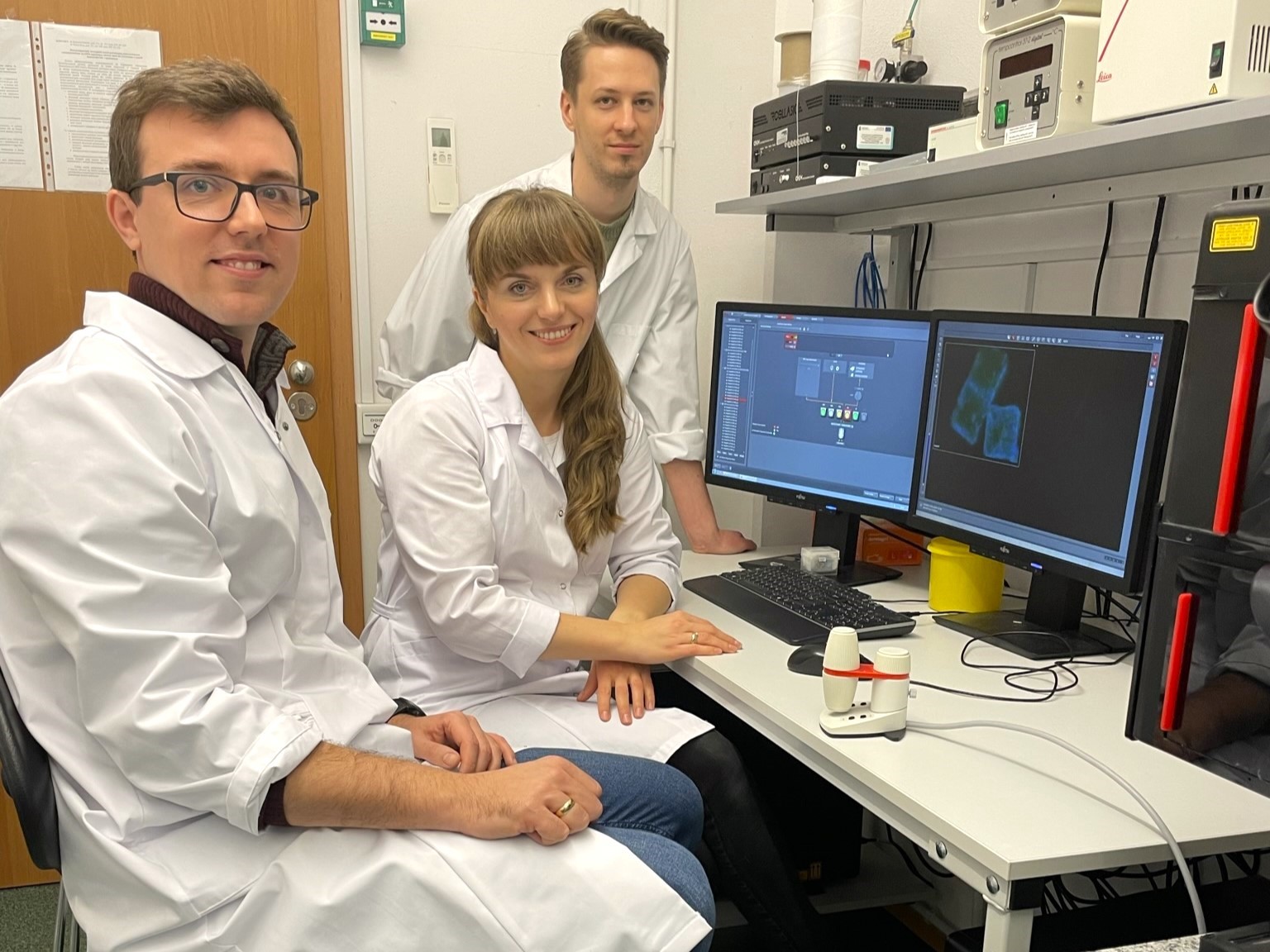The research team from IPPT PAN supervised by Paweł Nakielski, PhD from the Department of Biosystems and Soft Matter designed a biomaterial of microscaffolds, which will help deliver drugs and cells to the organism in a noninvasive way with a syringe.
The design was submitted to the Patent Office of the Republic of Poland under „A method for obtaining injectable biocompatible drug delivery vehicles, cell carriers or combinations thereof, in the form of microscaffolds, an injectable composition containing said vehicles, and its applications”. Additionally, the application was extended to other countries in the World Intellectual Property Organization. Currently, the scientists are looking for investors and funds for further research.
Polymer nanofibers are gaining more and more ground in medicine due to their similarity to the extracellular matrix, the space in which our tissue’s cells live and move. Moreover, polymer nanofibers are perfect for cell scaffolds or drug carriers due to a large specific surface area, which is a high ratio of surface-to-weight. Such properties, among others, can be used to produce dressings, blood vessel implants, antibacterial materials, and face masks.
So far, an operation has been required to insert scaffolds into a patient’s organism. Unfortunately, as an invasive procedure, an operation might carry the risk of postoperative complications. Our Team from IPPT PAN has invented a nanofiber biomaterial which can be inserted into tissue with the help of the most common syringe with a needle.
Traditionally, nanofibers get created during contact between polymer solution and high voltage. The biggest research centres conducting such research include China, South Korea, the US, Japan, and Germany. It is worth noting that in the last 20 years, the number of publications concerning electrospinning has risen 400 times.
“The innovation of the IPPT PAN Team starts as early as during the production process” – explains dr inż. Paweł Nakielski, the project leader – “And it lies in the fact that we have introduced a femtosecond laser in the production process”. The femtosecond laser is a device which emits energy impulses with durations between a couple to a couple of hundred femtoseconds (1 femtosecond (fs) is 10–15 seconds). The laser cuts the so-called microscaffolds in the obtained material, creating miniature holes. Microscaffolds prepared this way are only five times larger than the human tissue cells and can be placed in a syringe. Following injection into the tissue, the microscopic holes in the microscaffolds fill in the organism’s tissues and can, e.g. initiate the rebuilding of intervertebral disc tissue, thus providing a chance to eliminate the pain of the lower back.
Neurosurgeons and orthopedists have already examined the invention in treating intervertebral discs in bigger animals. Still, the nanofibers developed by the IPPT PAN researchers can also be applied more broadly, e.g. in supporting the healing of broken bones. They can also be used in slow-release drug delivery. Thus, while such a process lasts even a couple of months, the patients will not need to get a series of painful injections or remember to take a pill.
The inventors welcome various forms of contact.

From left to right: Paweł Nakielski, PhD; Olga Urbanek-Świderska, PhD and Michał Pruchniewski















